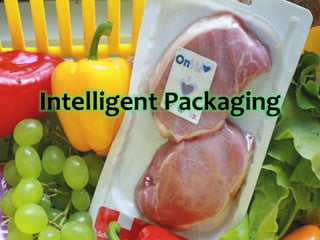Intelligent packaging systems aim to improve products and provide convenience to consumers. They function by detecting, sensing, recording, tracing, and communicating information. Three main types of intelligent packaging are used: quality indicators that detect freshness levels; time-temperature indicators that show appropriate storage conditions have been met; and gas concentration indicators that detect oxygen or other gas levels. These systems help to enhance safety, improve quality, and provide consumers with useful information.
















































